Designer Samuel Ross: ‘I love that red-hot line between sculpture and furniture’

Roula Khalaf, Editor of the FT, selects her favourite stories in this weekly newsletter.
Dr Samuel Ross likes to use his title, an honorary one bestowed on him by the University of Westminster in 2021 for his success in fashion and design. “It makes it easier for me to discuss things in the way that I do,” he tells me as we weave down the staircase of 180 Strand in London. Leanly built and sleekly dressed in black, he discourses on the notion of mortality designed into his newest Nike collaboration and on the lens of British Caribbean abstraction through which he makes his paintings. “If you don’t wear the shoe,” he says, describing the way the leather is intended to erode and peel away, “it doesn’t tell the story.”
Ross has a studio in 180 Strand, a 1970s Brutalist office block on the river Thames that, having undergone a dramatic interior conversion, has become ground zero for all things Gen Z, from pop-up ramen restaurants to elaborate immersive exhibitions that occupy its crater-sized basement. At just 32 years old, Ross could be its multidisciplinary poster boy. His clothing label A-Cold-Wall*, established in 2014, has standalone stores in China and a fleet of collaborations with names including Eastpak, Nike and Converse. His exhibition of abstract paintings and steel sculptures at White Cube in April this year sold well. His industrial design company, SR_A, has handled a raft of projects including a Hublot Tourbillon watch and the Beats Studio3 Wireless headphones.
Born in Brixton in 1991, it is not just through painting that he has interrogated the black British experience. “It is about black Britain and what it is to be working class,” he says of his Converge gilet, for example, which was acquired by the V&A for its collection in 2021. “It is descriptive of urban life. In its appearance, it’s about the city that is formed of marble and steel. And in essence, it’s about a need for the young man on the street to project masculinity and to cocoon and protect the body.”
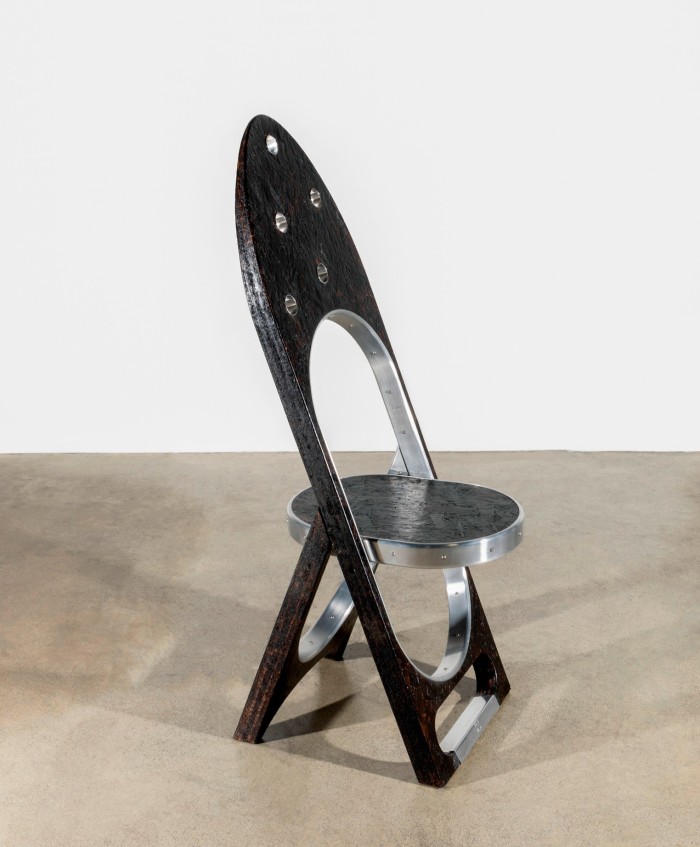
His limited edition furniture contains some difficult narratives: the Trauma chair (2020) takes the form of an African throne but its blackened surfaces are marked with references to scarring and torture. His paintings include ash from the volcano that vented in 1971-72 on the island of St Vincent, a crisis experienced by members of his family.
This critical gloom will be less on show during Design Miami, where Ross will be a presence both inside and outside the fair’s big white tent. The beginnings of a collaboration with the American bathroom company Kohler will be revealed within: an angular orange tap that juts around two corners to find its way over a basin and dispenses a sleek sheet of water from a newly devised delivery system.
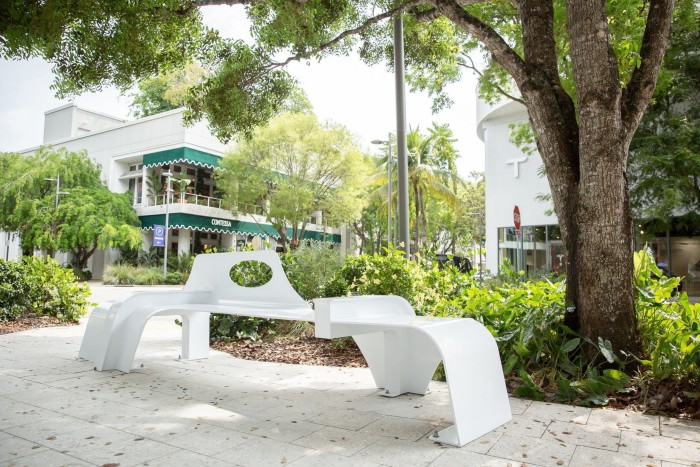
Outside, installed across the Design District, will be 12 benches that Ross was commissioned to create by Craig Robins, chief executive of Dacra, the district’s co-developer. In white powder-coated steel, to deflect the heat of the sun, they are formed of combinations of crisp straight lines, curves and voids that seem to pay homage to the British sculptors of the 1960 (Anthony Caro comes to mind). “I love that red-hot line between sculpture and furniture,” says Ross. “But these benches are there for service, for people to find respite, or for kids to climb over,” says Ross, who has a six-year-old and an 18-month-old. “If someone scratches them, or paints on them, it’s part of public engagement.”
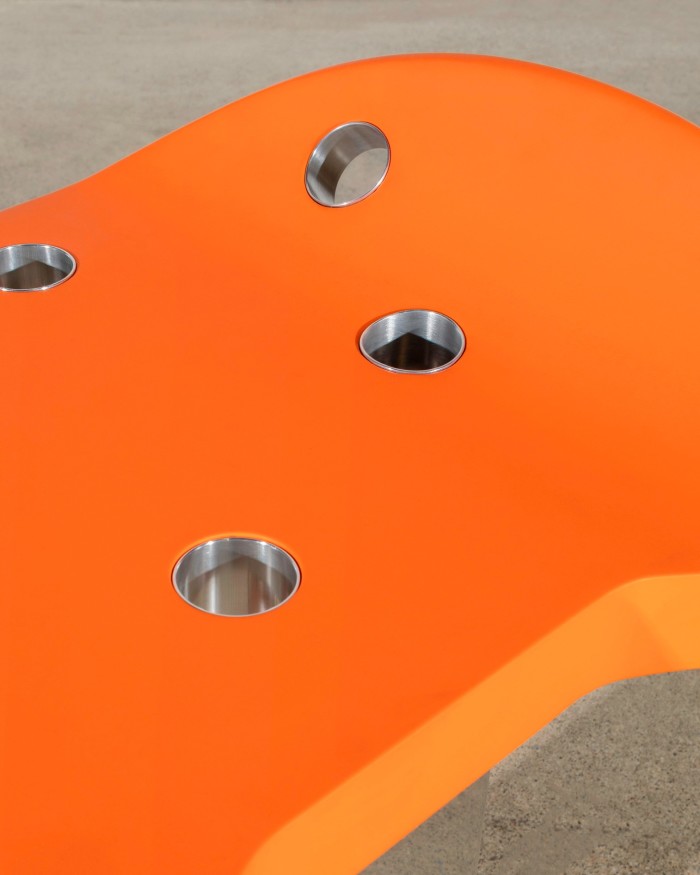
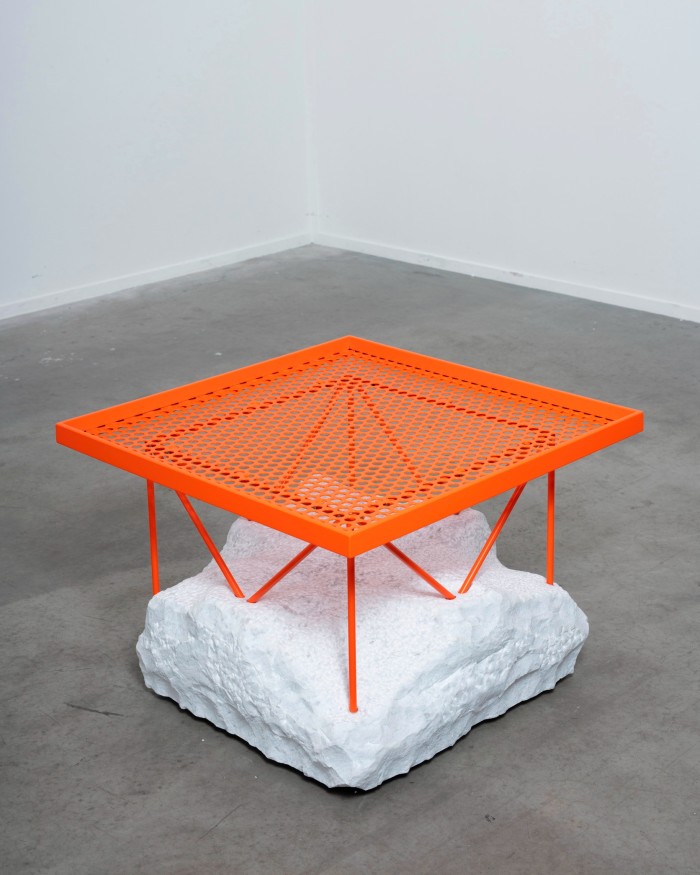
Ross is no stranger to Miami. The New York gallery Friedman Benda showed his limited-edition furniture pieces — big febrile compositions that push together natural and man-made materials — at Design Miami in 2021. The memory, however, is tinged with sadness. “Virgil passed away the day before it opened,” says Ross of his mentor Virgil Abloh, the Chicagoan who trained as an architect and became the first African-American artistic director at Louis Vuitton. “He was like an older brother, and a sparring partner, and he understood industrial design and product as well as luxury and fine art.”
Ross studied graphic design and illustration at De Montfort University in Leicester then went into product design, where he realised there was nobody else who looked like him. “That was startling,” says Ross. “I gave it a year and realised it wouldn’t take me where I wanted to go.” Instead he set up four websites, covering everything from design to films, and set about tracking down Abloh, who did look like him and was fulfilling a range of ambitions. He says he may have taken a reverse cue from his father, an artist working with architectural glass, too. “He is deeply optimistic and anarchic,” says Ross. “He probably thinks I’ve gone the other way.”
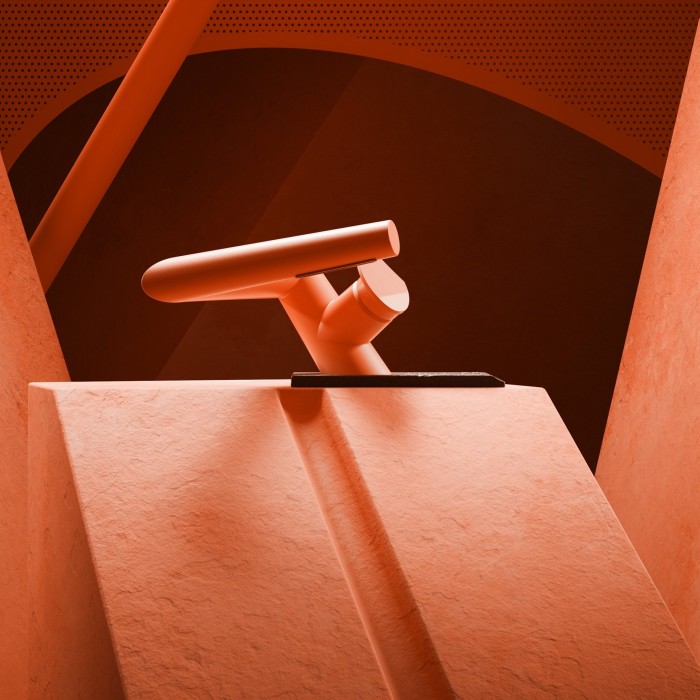
He worked next to Abloh for several years, on projects for Kanye West and on Abloh’s Pyrex Vision apparel line, before going it alone. Three years ago, with a desire to increase the options for young black and POC creatives, and now having the economic ability to do, he established the Black British Artist Grants programme, which has so far given financial support to the careers of 40 artists and entrepreneurs.
Like Abloh’s, Ross’s ambitions seem boundless, and each project like a stepping stone to a thoughtful kind of empire-building. Having worked out how to run a business, and how to work for others, he is turning his attention to craft as the fundamental component of luxury and to slowing down production. “With my business partner, Yi Ng, we often look through ad campaigns and products and say, ‘Landfill or value.’ Not many things get the second designation.” Even the taps come in a limited-edition of 299. Ross, through his polymathic pursuits, is firmly aiming for value.
Highlights in and around Design Miami
Textiles at Superhouse

Superhouse was set up three years ago by Stephen Markos to support contemporary artists who are mostly defined by the handmade. “I wanted to create some diversity in the design landscape and bring a professional presentation to those who are experimental in their making,” says Markos, who has a space in New York’s Chinatown. On his booth at Design Miami, he is showing a range of textile work, including the highly technical, but apparently intuitive, abstract tapestries by Alfhild Külper and rugs by Elizabeth Browning Jackson.
Katie Stout at Nina Johnson
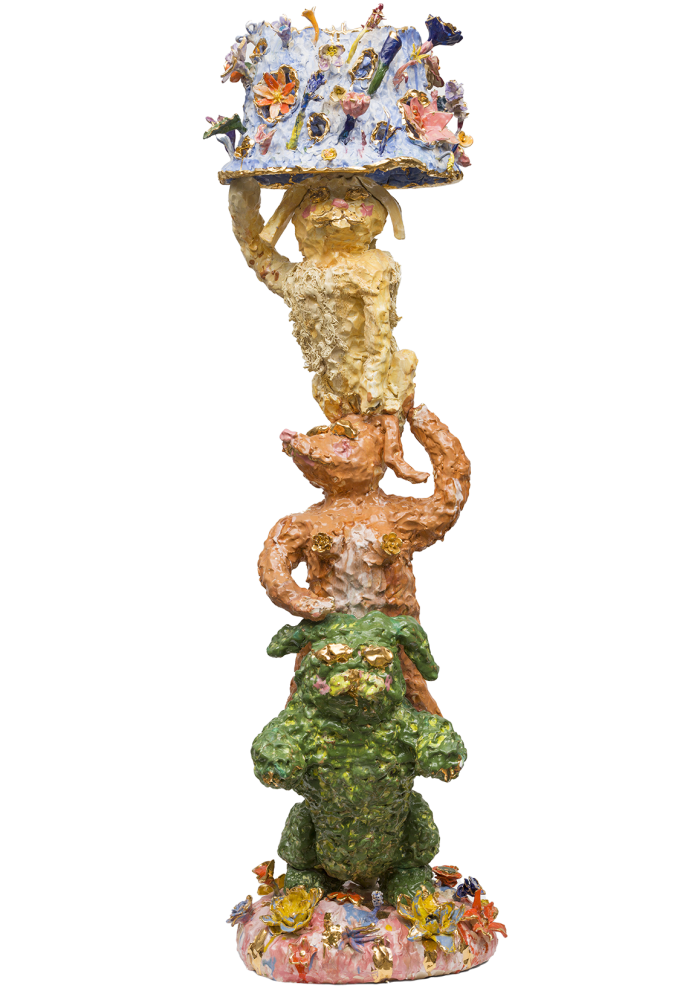
At her impressive space in Little Haiti, gallerist Nina Johnson is showing Katie Stout, a ceramicist whose work has garnered attention for its opulence as well as its provocation. She is now a mother, and works in a large upstate New York studio, and the scale of Stout’s pieces has grown — the largest on show is seven feet high — while the subject matter still refers to her own body, now as a vessel, and the bucolic place in which she finds herself. “It partly demonstrates an animalistic response to her new situation,” says Johnson. “But also an increase in technical ambition.”
Marina Abramović: Chairs for Human and Spirit Use at Haada
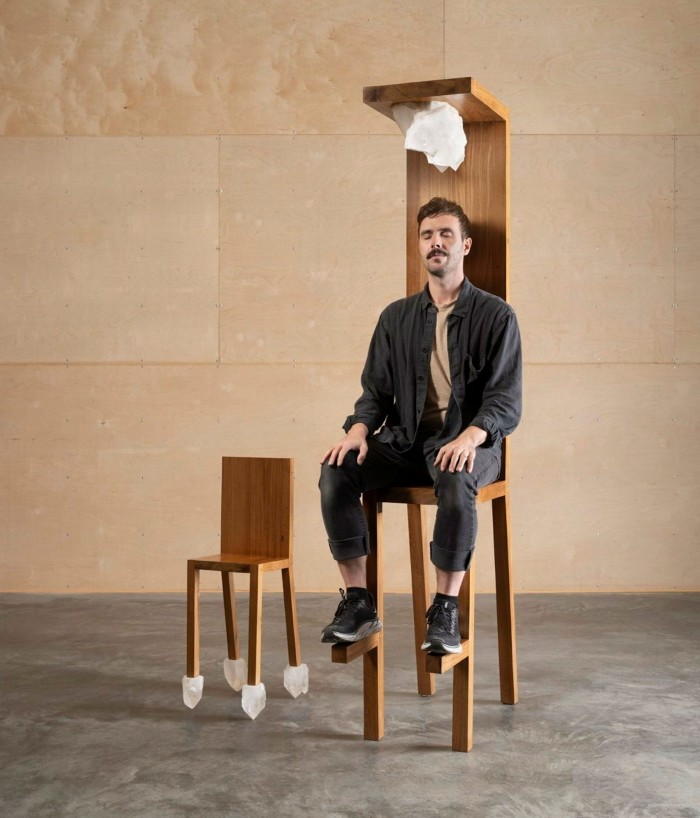
“We’re interested in the way that disciplines blur over boundaries, and no one is a greater exponent of that than Marina Abramović,” says Christian Larsen, a former curator at the Met and MoMA and a director at the non-physical gallery Haada, which has a booth at Design Miami. “I got a call from Marina out of the blue,” he says. “She had read a text I wrote about her use of chairs in her work and the way she uses objects from the material world for spiritual transcendence. They are not props.” Less spiritually, Abramović’s large chairs are $195,000.
Lara Bohinc: Utopia
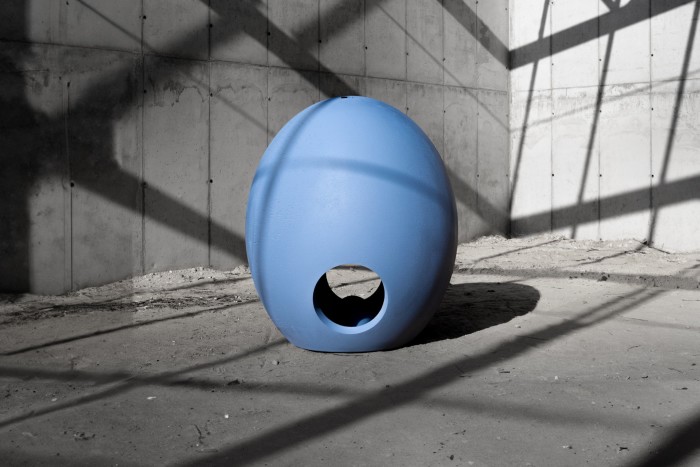
London-based Lara Bohinc is peppering Miami’s Design District with her outsized creations hewn from cork as the winner of the annual design commission. “I wanted to do something liberated from domestic scale,” she says. Bohinc started her professional life as a jeweller, before moving into furniture design. Now, in rural Portugal, she has been making sofas that are five metres long and eggs that are nearly two metres high. “The eggs have solar panels and will be illuminated inside at night. You can crawl inside them,” says Bohinc.
Nifemi Marcus-Bello at Marta
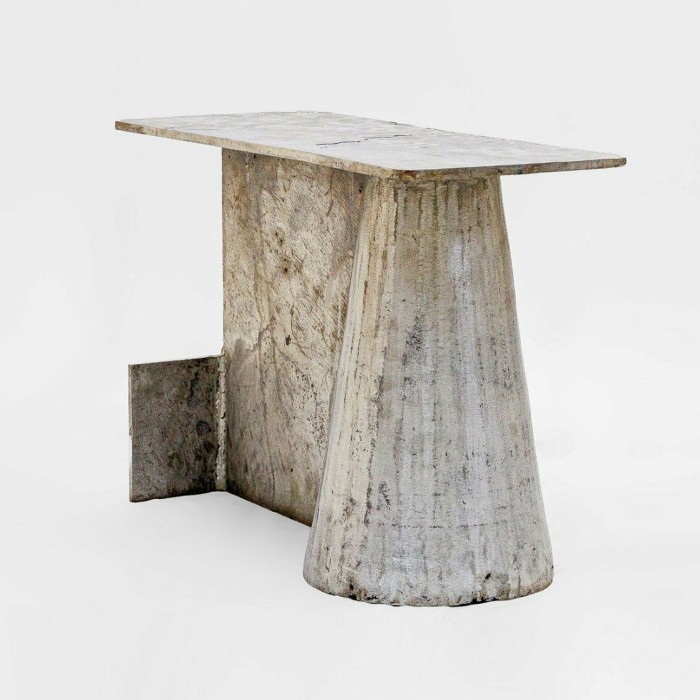
At the entrance to Design Miami, visitors will encounter a suspended hemisphere of polished stainless steel from which salt runs into a pile on the floor. With the unstoppable quality of an egg-timer, its creator Nifemi Marcus-Bello sees it as an analogy for the migration crisis that he witnessed first hand in Venice last year. The designer, who is based in Lagos, is also showing a series of furniture and objects made by casting aluminium in sand, at LA gallery Marta. “The casters are usually making spare parts for cars,” explains Bello. “I like to harness local ways of working.”
Bless at Fendi
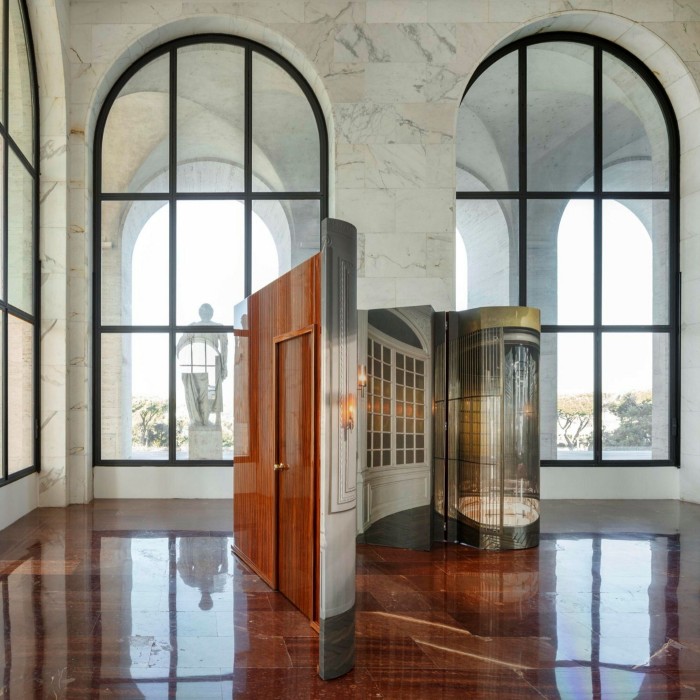
Bless are the Paris- and Berlin-based designers Ines Kaag and Desiree Heiss, who trained in fashion and work across a multitude of platforms, blending fashion, design and photography in their practice. Invited to the Palazzo della Civiltà Italiana, the fascist building in Rome that Fendi has restored as its headquarters, they looked behind the scenes of the fashion house and photographed the building, using these images to create a trompe-l’œil environment on show at Design Miami. Bless has also made objects that refer to their own and Fendi’s work. Expect to find bottles of cleaning products wearing a shearling coat and a suitcase recast as a brown-paper package.
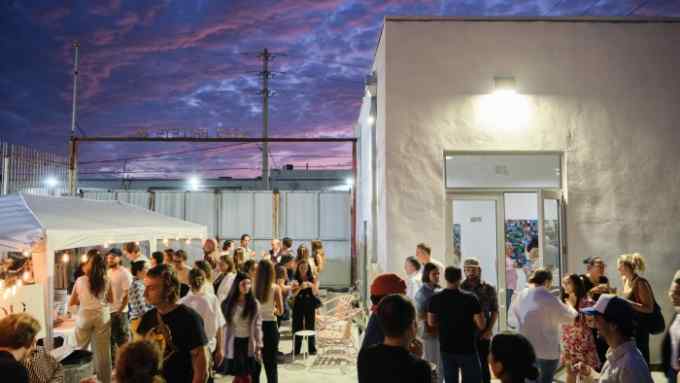
Comments